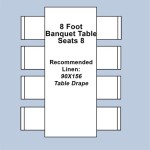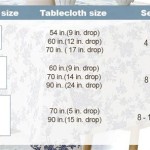Fixing Laminate Table Top Scratches: A Comprehensive Repair Guide
Laminate table tops are a popular choice for furniture due to their durability, affordability, and wide range of aesthetic options. However, despite their resilience, laminate surfaces are susceptible to scratches from everyday use. Understanding the nature of these scratches and employing appropriate repair techniques are crucial for maintaining the appearance and longevity of a laminate table top.
This article provides a comprehensive guide to identifying, assessing, and repairing scratches on laminate table tops. It outlines various methods, from simple concealments to more involved restoration procedures, enabling individuals to effectively address different types of damage and restore the surface to a presentable condition.
Identifying the Type and Severity of Scratches
Before attempting any repairs, it is essential to accurately assess the type and severity of the scratches. This assessment will dictate the appropriate repair method and the materials required. Scratches on laminate surfaces can be broadly categorized into three levels: surface scratches, medium scratches, and deep scratches.
Surface scratches are the most common and least intrusive. These scratches typically only affect the top layer of the laminate and are often caused by minor abrasions from dust, dirt, or light contact with objects. They appear as fine lines that are noticeable primarily under certain lighting conditions. These scratches can often be addressed with simple polishing or concealing techniques.
Medium scratches penetrate slightly deeper into the laminate surface, affecting the printed design layer. These scratches are more visible than surface scratches and may appear as slightly discolored lines. Repairing medium scratches often requires filling the scratch with a color-matched material and carefully blending it with the surrounding surface.
Deep scratches are the most severe form of damage. These scratches penetrate through the printed design layer and into the core material of the laminate. They are easily visible and may expose the underlying substrate. Repairing deep scratches requires filling the void with a durable filler, replicating the original color and pattern, and ensuring a smooth, seamless finish.
The method of assessment involves visually inspecting the table top under different lighting conditions. Using a magnifying glass can aid in examining the depth and extent of the damage. Running a fingernail gently across the scratch can help determine its depth; if the nail catches, the scratch is likely medium or deep.
Simple Concealment Techniques for Minor Scratches
For minor surface scratches, simple concealment techniques can often be sufficient to improve the appearance of the laminate table top. These methods aim to either fill the scratch with a material that matches the surrounding color or to polish the surface to minimize the visibility of the scratch.
One common method involves using a furniture polish specifically designed for laminate surfaces. These polishes contain oils and waxes that fill in minor imperfections and create a protective layer on the surface. Applying the polish according to the manufacturer's instructions, typically with a soft cloth in a circular motion, can effectively mask surface scratches.
Another option is to use a wax-based crayon or a touch-up marker that closely matches the color of the laminate. These products are designed to fill in scratches and blend them with the surrounding surface. It is important to choose a color that is as close as possible to the laminate to avoid a noticeable repair. The crayon or marker is carefully applied to the scratch, and any excess is wiped away with a clean, soft cloth. It's important to work carefully, applying light pressure and using multiple layers if necessary to achieve the desired result. After application, a buffing cloth can be used to blend the repair into the surrounding area.
Shoe polish in a matching color can also be used to conceal surface scratches. Applying a small amount of shoe polish to the scratch, allowing it to dry briefly, and then buffing the area with a soft cloth can effectively minimize the appearance of the scratch.
These concealment techniques are best suited for minor scratches that do not penetrate deeply into the laminate surface. For more severe scratches, more involved repair methods are necessary.
Advanced Repair Methods for Medium and Deep Scratches
When dealing with medium to deep scratches on a laminate table top, more advanced repair methods are required to achieve a satisfactory result. These methods involve filling the scratch with a durable material, color-matching the filler to the surrounding laminate, and blending the repair seamlessly with the adjacent surface.
One common technique involves using a laminate repair paste or filler. These products are specifically designed for repairing laminate surfaces and are available in a variety of colors. Choose a color that is as close as possible to the laminate, or consider mixing different colors to achieve a precise match. Cleaning the area around the scratch with a mild detergent and allowing it to dry completely is essential before starting the repair process.
Apply the laminate repair paste or filler to the scratch using a putty knife or a small spatula. Overfill the scratch slightly to allow for shrinkage during the drying process. Smooth the filler to ensure that it is level with the surrounding surface. Remove any excess filler from the surrounding area with a clean, damp cloth. Allow the filler to dry completely according to the manufacturer's instructions, which may take several hours or even overnight.
Once the filler is dry, sand the repaired area with fine-grit sandpaper to create a smooth, even surface. Start with a coarser grit sandpaper (e.g., 220-grit) and gradually move to finer grits (e.g., 400-grit, 600-grit) to achieve a smooth finish. Be careful not to sand too aggressively, as this can damage the surrounding laminate.
After sanding, clean the area with a soft cloth to remove any sanding dust. If the color of the filler does not perfectly match the laminate, use a touch-up marker or paint to blend the repair seamlessly with the surrounding surface. Apply the touch-up marker or paint sparingly, and feather the edges to avoid a noticeable transition.
Completing the repair involves applying a clear coat of sealant or lacquer to protect the repaired area and provide a uniform finish. Choose a sealant or lacquer that is compatible with laminate surfaces and follow the manufacturer's instructions carefully. Apply the sealant or lacquer in thin, even coats, allowing each coat to dry completely before applying the next. This process will help to create a durable and seamless repair that is virtually invisible.
For deep scratches, especially those that expose the core material, it may be necessary to use a wood filler or epoxy resin to fill the void. These materials provide excellent strength and adhesion, and can be sanded and painted to match the surrounding laminate. The repair process is similar to that described above, but may require multiple layers of filler to achieve a smooth, even surface. Patience and attention to detail are crucial for achieving a successful repair.
Ultimately, the choice of repair method depends on the severity of the scratch, the available materials, and the individual's skill level. For complex or extensive damage, it may be advisable to consult a professional furniture repair specialist. They possess the expertise and tools to effectively repair laminate surfaces and restore them to their original condition.
Regardless of the chosen repair method, proper preparation and careful execution are essential for achieving a satisfactory result. By following the steps outlined in this guide, individuals can effectively repair scratches on laminate table tops and maintain the beauty and longevity of their furniture.

How To Repair A Scratch In Veneer Or Laminate Furniture

Repairing Scratches On A Table Top

How To Repair A Scratch In Veneer Or Laminate Furniture

3 Ways To Remove A Scratch From Laminate Countertop Wikihow

5 Easy Ways To Fix Scratched Furniture

How To Repair A Deep Scratch In Your Laminate Countertop

The Ultimate Guide To Repairing Scratches On Wood Furniture

Tested 5 Ways To Remove Scratches From Wood Furniture A Erfly House

8 Ways To Fix Scratches On A Laminate Floor Mersey Flooring

How To Fix Scratches In Vinyl Plank Hardwood And Laminate Floors
Related Posts








